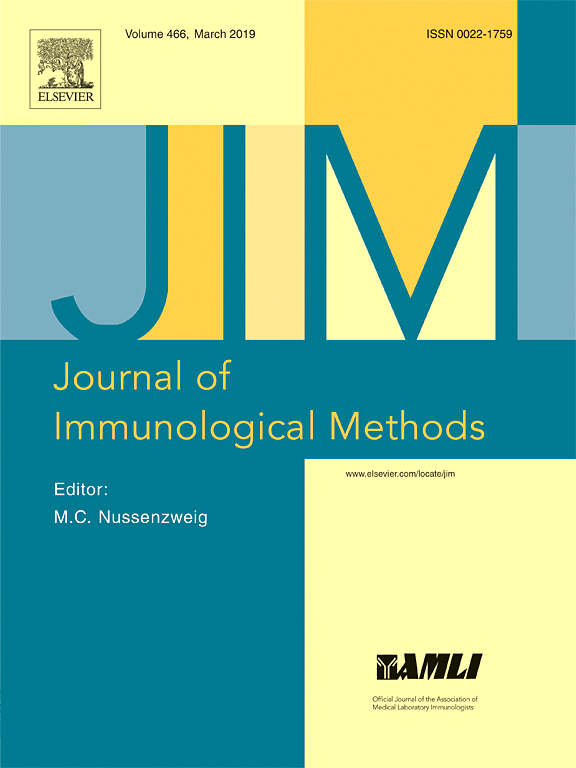Ver ítem
- xmlui.general.dspace_homeCentros e Institutos de InvestigaciónCICVyA. Centro de Investigación en Ciencias Veterinarias y AgronómicasInstituto de VirologíaArtículos científicosxmlui.ArtifactBrowser.ItemViewer.trail
- Inicio
- Centros e Institutos de Investigación
- CICVyA. Centro de Investigación en Ciencias Veterinarias y Agronómicas
- Instituto de Virología
- Artículos científicos
- Ver ítem
Enhanced sensitivity in detection of antiviral antibody responses using biotinylation of foot-and-mouth disease virus (FMDV) capsids
Resumen
Analysis of the immune response to infection of livestock by foot-and-mouth disease virus (FMDV) is most often reported as the serum antibody response to the virus. While measurement of neutralizing antibody has been sensitive and specific, measurements of the quality of the antibody response are less robust. Determining the immunoglobulin (Ig) isotype of the serum antibody response provides a deeper understanding of the biology of the response and more
[ver mas...]
Analysis of the immune response to infection of livestock by foot-and-mouth disease virus (FMDV) is most often reported as the serum antibody response to the virus. While measurement of neutralizing antibody has been sensitive and specific, measurements of the quality of the antibody response are less robust. Determining the immunoglobulin (Ig) isotype of the serum antibody response provides a deeper understanding of the biology of the response and more sensitive methods for these assays will facilitate analyses of B cell mediated immunity. We tested the hypothesis that using the virus as the molecular probe could be achieved by adding tags to the surface of the FMDV capsid, and that would enhance sensitivity in assays for anti-FMDV antibody responses. The use of a FLAG-tagged virus in these assays failed to yield improvement whereas chemically biotinylating the virus capsid resulted in significant enhancement of the signal. Here we describe methods using biotinylated virus for measuring anti-viral antibody in serum and antibody secreting cells (ASCs) in blood that are sensitive and specific. Finally, we describe using the biotinylated virus in flow cytometry where such assays should greatly enhance the analysis of anti-virus antibody producing B cells, allowing the investigator to focus on only the FMDV specific B cells when analyzing the development of the B cell response to either infection or vaccination.
[Cerrar]

Autor
Kenney, Mary;
Waters, Ryan A.;
Rieder, Elizabeth;
Pega, Juan Franco;
Perez Filgueira, Daniel Mariano;
Golde, William T.;
Fuente
Journal of immunological methods 450 : 1-9. (November 2017)
Fecha
2017-11
Editorial
Elsevier
ISSN
0022-1759
Formato
pdf
Tipo de documento
artículo
Palabras Claves
Derechos de acceso
Restringido
 Excepto donde se diga explicitamente, este item se publica bajo la siguiente descripción: Creative Commons Attribution-NonCommercial-ShareAlike 2.5 Unported (CC BY-NC-SA 2.5)
Excepto donde se diga explicitamente, este item se publica bajo la siguiente descripción: Creative Commons Attribution-NonCommercial-ShareAlike 2.5 Unported (CC BY-NC-SA 2.5)

